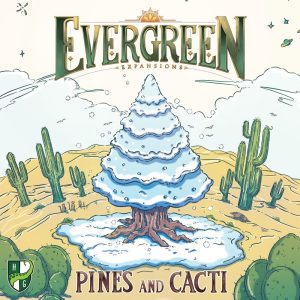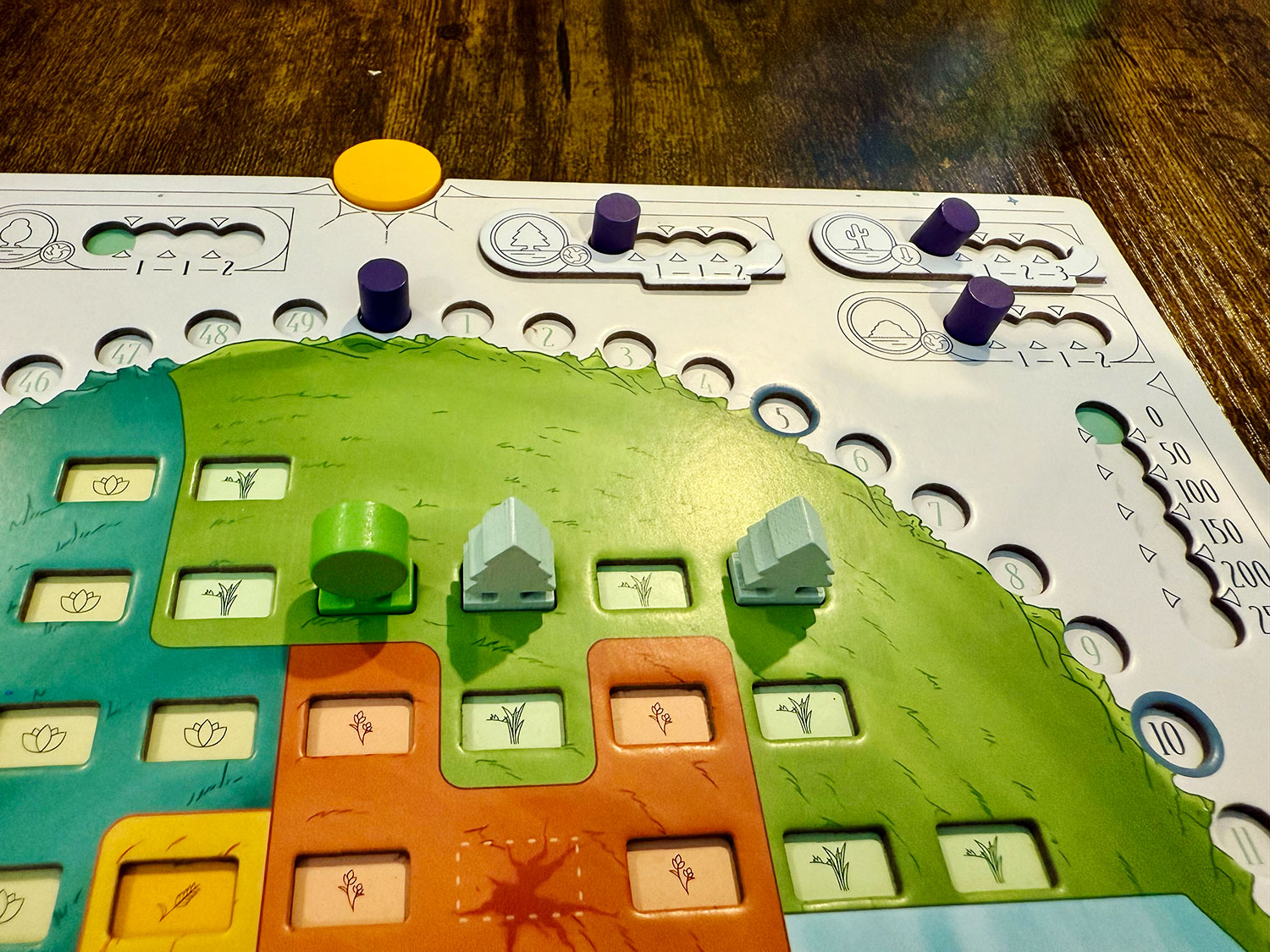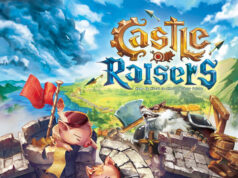 Evergreen lured me in with the premise of the player being a sort of rogue god overseeing the natural development of their own little world and kept me hooked with a quietly tense style of side-by-side solo tableau building. You compete against your own poor planning skills, and your downfall won’t be a sharkish move by your competitor, but a bush you misplaced several turns prior that has come back to haunt you. As I played, I was charmed by the way that the perfect little plant meeples slotted into the board, and how satisfying it is to grow a sprout into a large shade-casting tree as the sun arcs the field of play.
Evergreen lured me in with the premise of the player being a sort of rogue god overseeing the natural development of their own little world and kept me hooked with a quietly tense style of side-by-side solo tableau building. You compete against your own poor planning skills, and your downfall won’t be a sharkish move by your competitor, but a bush you misplaced several turns prior that has come back to haunt you. As I played, I was charmed by the way that the perfect little plant meeples slotted into the board, and how satisfying it is to grow a sprout into a large shade-casting tree as the sun arcs the field of play.
It seems like there are as many potential options for expanding on this game as there are types of trees in the forest, but can they be balanced against the existing features? Can they add anything new or innovative? Pines and Cacti takes a swing at it, providing two very different modules in a single expansion box.
Expansion Overview:
Pines and Cacti are two modular expansions that can be played with the Evergreen base game. Each introduces a new flora feature with its own rules. The expansion box packs in 14 new biome cards, 72 wooden pieces, 8 power tokens, and 2 player aids. To play, you sub in one or both of these modules for basic bonus scoring features, like water or bushes, by swapping out any cards for unused features, and using the expansion’s power tokens to cover up the scoring track for those unused slots.

Pine trees grow from sprouts in two stages, like the fir trees of the base game. The difference is that pine trees thrive in the shade. When end-of-round scoring arrives, any small pine tree being shaded by a larger tree at the end of a season automatically grows into a big pine. For their power, you can replace one sprout with one small pine. They are unaffected by lake placements.
Cacti grow quickly but die in the shade. They can only be used on the biome that they are drafted in. Cacti in the sun earn the player 1 point, and any that are shaded at end of round scoring are removed from the board, earning nothing. Because they can be calculated into the largest forest score, this also means that removing one cactus at the wrong time can mess with your entire field of play. Additionally, with the Cacti in play, any biome card with negative fertility gets added to the fertility zone, creating the possibility of negative-scoring biomes.

Game Experience with Expansion:
Pines and Cacti uphold the high standard of production from the original game. The pieces are simple but well designed, with thoughtful shapes and color palettes. As someone with limited shelf space, I always appreciate an expansion that can be combined easily with the base game, and Evergreen accommodates this with space to spare. Going through and having to pull out cards from the base deck in order to add an expansion module is a bit of a hassle, but the trade-off is new content that doesn’t bloat the base game or disrupt the balance of powers.

While this expansion doesn’t increase the player count at all, it gives you new options and opens up gameplay possibilities. As long as you have six powers in a game, you can mix and match to your heart’s desire, opening up a variety of new ways to play. A game featuring both the standard game trees and pines would yield a very sun-crowded field, but they could synergize well between the trees that thrive in the sun and those that grow in the shade. Playing both bushes and cacti could create a more competitive fight for the largest forest.
The threat of negative scoring for biomes is the change that I found most compelling. It adds a new layer of strategic thought that refreshes the game experience. Pines are a more subtle change from the base game, but players who have grown comfortable with standard play will be challenged by the new complexities of cacti without it veering too far away from the difficulty level of the base game.
Final Thoughts:
Pines and Cacti adds a lot of content while still fitting well into the base box. Cacti represent a big shift in strategy and gameplay, whereas the Pines are a smaller adjustment without quite as much to offer. For folks who have played the base game into the ground, Pines and Cacti is a useful, well produced expansion to help broaden your options.
 Hits:
Hits:
• Cacti updates gameplay in several interesting ways
• The quality of the pieces is high
• Can be easily integrated into the base game, or sit on your shelf as is
Misses:
• Doesn’t expand the player number, which is still capped at 4
• Pines is fine, but doesn’t add anything innovative to gameplay





















